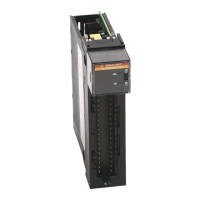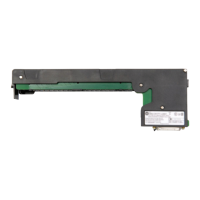62 Rockwell Automation Publication 1756-UM540E-EN-P - December 2017
Chapter 4 Temperature-sensing Analog Modules
The following graphic shows 10 Hz Notch Filter selection and how the noise is
dissipated over the entire spectrum but especially at the Notch Filter setting and
its overtones.
Relationship between Noise Rejection Level and RPI Setting
The modules offer two levels of line noise rejection. Each level has a filter
associated with it. The module automatically determines which filter is used
based on the Notch Filter setting and RPI rate.
A trade-off exists between sampling speed and level of noise rejection:
• The faster the sampling speed, the less noise rejection. In this case, the
1756-IRT8I module automatically uses a SINC^1 filter. The 1756-IR12,
and 1756-IT16 use a Sinc^5+Sinc^1 filter combination.
This filtering option offers 34 dB noise rejection at the Notch Filter
frequency and its overtones.
• At slower sampling rates (RPI > 3/Notch), the module has better noise
rejection. In this case, the module automatically uses a SINC^3 filter.
The SINC^3 filter offers 100 dB noise rejection at the Notch Filter
frequency and its overtones.

